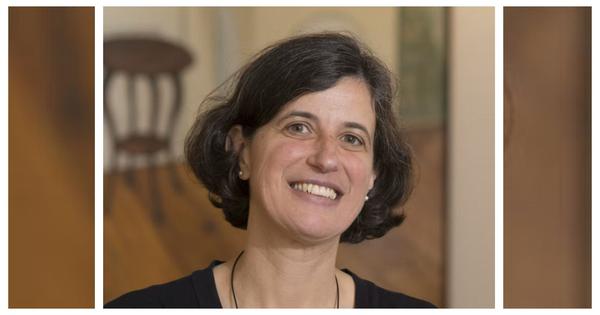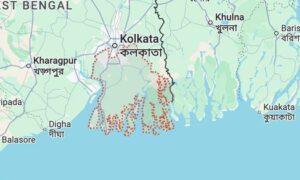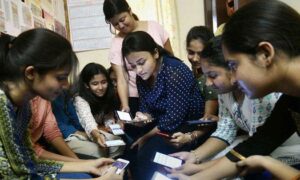
Few studies have shaped our understanding of modern Hindi and its deep entanglement with politics and culture as profoundly as Francesca Orsini’s The Hindi Public Sphere, 1920-1940: Language and Literature in the Age of Nationalism.
The book, published in 2009, is widely regarded as a landmark work. So it is understandably shocking to learn that the distinguished professor at London’s School of Oriental and African Studies was deported from New Delhi airport on Monday. Unidentified government sources claimed to journalists that she had conducted research on previous trips despite only having a tourist visa.
The strength of Orsini’s scholarship on the understanding and the development of the field of Hindi literary discourse stems from the vast canvas, filled with thick contextual details, that she paints of the modern Hindi language and literature in the two crucial decades (1920-1940) of the national movement.
The “public sphere” of Hindi is constituted of the intersections of literary and political movements, institutional and ideological spaces, and an expansive print culture marked by increasing diversity of journals, newsletters, pamphlets, books and magazines spearheaded by editors, political leaders and writers with overlapping roles. The result is a panoramic view that helps us understand not just the past, but the present politics of language in India.
At a time when Hindi, heavy with Sanskrit vocabulary, has been tied to a narrow, exclusionary nationalism, Orsini reminds us that the Hindi public sphere was once far more diverse. Her research traces how Hindi took on certain dominant forms and how those forms became aligned with hegemonic cultural and political ideologies. Yet, she also uncovers the other, less-heard voices that challenged this dominance.
Professor Francesca Orsini is a great scholar of Indian literature, whose work has richly illuminated our understanding of our own cultural heritage. To deport her without reason is the mark of a government that is insecure, paranoid, and even stupid.https://t.co/j5Fz1uOphS
— Ramachandra Guha (@Ram_Guha) October 21, 2025
The concept of “public sphere” in her work borrows from German philosopher, Jurgen Habermas’ influential idea of how people come together to discuss, critique and influence political action. By reimagining it in the context of Hindi language, Orsini limits the narratives of standardisation, uniformisation and Sanskritisation of Hindi to just one part of the public sphere.
In this particular space, the norms of the “public” are conceived in the imaginaries of “Indian” and “national” expressed in terms such as “lok”, “jati”, “sarvsadharan” that defied any display of differences and conflicts of caste, region, religion or other interests. The language and literature- style, content and form were increasingly subordinated to this perspective of lok, the public that remained abstract and devoid of particularities.
Writers and editors of the time pushed for a purified Hindi, stripped of colloquial and regional elements. This, they believed, would serve the idea of a unified national culture.
However, Orsini highlights the challenges, critique and reformulation that constituted another significant part of the Hindi public sphere. In her meticulous work on magazines and journals circulated for women, she notes the challenges that are posed to this abstract ideal of the nation through questions around gender roles, and the caste and regional diversity around the societal and customary laws concerning women.
The discussion of the plight of widows, intimate stories of domestic violence along with the news about women participation in the national movement placed the women’s issues in society as central to the nationalist concern. Such a critique punctured the projection of the political community as neutral and abstract.
Further, this understanding of the public also reformulated and expanded the ideas of justice, and equality through the discussion of marginalised voices.
Amidst the calls for a standardised Hindi from editors and literary critics, traditional Braj poetry, folk tales, and experimental writing continued to flourish. Magazines that featured the voices of workers and peasants gave rise to a more “popular” sense of the public, one that challenged elite control and included the spoken varieties of Hindi.
Francesca Orsini’s scholarship has greatly enriched Hindi literary studies and history of the book in India. She is a renowned scholar published worldwide in English and in Hindi. She has just been denied entry into India, with no reason given. pic.twitter.com/yQNcNWsJ2I
— Permanent Black (@PermanentBlack) October 21, 2025
Orsini also examines how “Hindi intellectuals” came to dominate educational institutions, shaping curricula, textbooks, and examinations that effectively institutionalised a certain version of Hindi as the national language. She notes that the cultural diversity is also eluded among the political leadership who she refers to as “Hindi politicians”, arguing that despite their differences on the ideological spectrum, they agreed about the cultural and civilisational importance of the specific form of Hindi to the Indian nation.
This is where I believe her argument invites further debate, as it risks overstating the consensus among these figures. I have attempted to offer a critique of this argument here.
Nevertheless, Francesca Orsini’s scholarship remains essential to anyone seeking a deeper understanding of India’s cultural and political landscape. Through her work on the literary and linguistic expanse of the varieties of Hindi language, she has complicated the attempts at hegemonic portrayals of cultural nationalism. Her scholarship stands steadfast amidst the intolerant and exclusivist pressures of the present political discourse.
Prachi Gupta teaches political theory at IILM University, Gurugram.
📰 Crime Today News is proudly sponsored by DRYFRUIT & CO – A Brand by eFabby Global LLC
Design & Developed by Yes Mom Hosting






